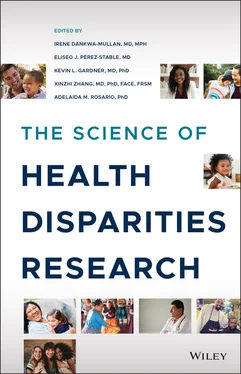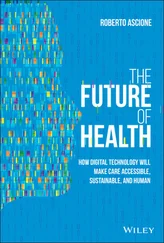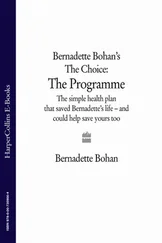4.4.2 Health Technology—New Vital Signs
EHRs are proving to be significant partners in research. The Committee on the Recommended Social and Behavioral Domains and Measures for Electronic Health Records with the Board on Population Health and Public Health Practice published Capturing Social and Behavioral Domains and Measures in Electronic Health Records: Phase 2 [34]. The effort conceptualizes the EHR as a kind of nervous system with the potential to unify policy and business frameworks and to produce coordinated action on improving healthcare in light of social and behavioral research. Guided by the National Academies of Science, the committee recommended expanding the four domains commonly collected (tobacco use, alcohol use, race/ethnicity, residential address) with eight more (education level, financial resource strain, stress, depression, physical activity, social isolation, intimate partner violence, and neighborhood median household income [deduced from address]).
These variables are known as “psychosocial vital signs” and are considered means to ensure that all clinical, public health, and community resources needed were made available to patients [35]. Behavioral determinants of health—physical activity joins tobacco use and alcohol use—figure prominently. This information can help link patients who need support to improve physical activity, alter alcohol habits, change diet, or access other resources in the community known to healthcare personnel.
Many of the domains are directly aligned with those in the World Health Organization PROGRESS mnemonic ( p lace of residence [rural or urban], r ace/ethnicity, o ccupation, g ender, r eligion, e ducation level, s ocioeconomic position, and s ocial capital or resources) [25]. Standardizing this information may facilitate better care, improve population health, and promote more informative research, but also help patients overcome barriers to prevention and wellness efforts by identifying modifiable determinants of health when support can be established.
4.4.3 Health Technology—Smartphone Use
The frequent use and broad reach of messaging on mobile phones have made them attractive tools in studies of behavior and health. Researchers appreciate their ubiquity, efficiency, cost‐effectiveness, potential for message tailoring, just‐in‐time communication, and likelihood of intake and responsiveness: within three minutes of receipt, 90% of text messages are read and 99% are opened. Receivers are rewarded with a dopamine release associated with text message receipt. A meta‐analysis and systematic review of text messaging interventions directed at behavior change and health improvement amassed from 15 carefully selected studies found that messaging interventions were effective in confronting behavioral determinants of health, such as medication adherence for antiretroviral therapy, diabetes management, smoking cessation, physical activity, stress and coping, and weight loss.
Of particular interest to health disparities researchers is that Latinos are significantly more likely than Whites to send or receive text messages (83% vs. 70%) and that both Latinos (83%) and African Americans (76%) use messaging more than Whites [36]. Likewise, Latinos (73%) and African Americans (67%) have been shown to be more likely than Whites (58%) to use their smartphones for health information [35].
Taking advantage of this use is Quitxt , a Latino‐attuned subscription service that promotes tobacco cessation by providing young adults real‐time support, interactive messages, and motivating videos and music. These create a culturally relevant path toward quitting and tools for handling related stress. Quitxt enrolled 798 participants in its initial launch; at the 7‐month follow‐up, investigators found that 21% (171) of enrollees reported abstinence. This finding is consistent with high rates of success found in studies of telephone counseling for young adults, and confirms that text and mobile media services specifically designed for young adults provide a feasible and potentially cost‐effective approach to promoting cessation [32].
Simply having access to mobile broadband can be an issue in remote areas [37], which means the lack of Internet access must be added to the limitations in that health setting. The cost of smartphone data and phone plans, as well as technology literacy and comfort among different age groups with technology, are also barriers that may further widen the digital divide and affect minority health behavior interventions and outcomes.
4.4.4 Underresearched Constituencies
Questions on sexual and gender minorities (SGMs) were included on 10 recurring federal surveys, according to an Institute of Medicine report in 2011 [38] (an expansion and follow‐up after a 1999 volume on lesbian health) [39], but none measured gender identity. The committee producing the report met in open session three times to hear from invited speakers and members of the public, ask questions, and provide a forum to share knowledge. The committee recommended that researchers continue to collect data on sexual orientation and gender identity on federal surveys, and that the National Institutes of Health (NIH) foster more research in the SGM community.
The lack of data on the SGM community, like the sparse data on American Indian populations and other underresearched populations, cripples efforts to craft basic and effective interventions to enhance health and prevent health‐adverse consequences, including behavior‐related lung disease and energy imbalance when calorie consumption and expenditure are not equal. The lack of data means public health officials cannot construct an evidence‐based hierarchy of risks for the SGM community and prioritize those risks. The NIH has created the Sexual and Gender Minority Research Coordinating Committee, whose activities are led in part by the National Institute on Minority Health and Health Disparities. Among its goals are holding listening sessions with stakeholders to identify SGM health priorities and developing an NIH SGM strategic plan for health research [39].
4.4.5 Advancing the Cycle of Better Care, Better Health, Lower Costs
Acknowledging that the continual increase in the cost of healthcare is unsustainable—the share of the US economy devoted to healthcare in 2015 was 17.8%, an increase of 5.8% over 2014—and that prevention is more cost‐effective than treatment, the Massachusetts Public Health Association helped create a $60 million trust fund for community‐level health strategies from those who would benefit from the savings—health plans and large healthcare systems [28]. Its aims included increasing healthy behaviors, reducing health disparities, reducing rates of the state's most costly preventable health conditions, developing a more robust evidence base of effective prevention programs, and promoting implementation of workplace programs that promote wellness. Public health advocates made public health part of the debate of a healthcare cost‐containment legislative initiative and built a robust coalition of businesses, civic leaders, and local government officials.
This multilevel approach has served more than 372 000 Massachusetts citizens, and evaluators estimate cost savings in targeting diet and nutrition, leisure‐time exercise, and stress reduction to be between $760 000 and $4.1 million [29]. Over a lifetime, hypertension programs are expected to avert healthcare costs $9 million to $16 million, while tobacco use programs could save from $622 118 to $5.6 million. Other advances are expected in building capacity, improving affordable housing environments, and engaging hard‐to‐reach populations.
Читать дальше












